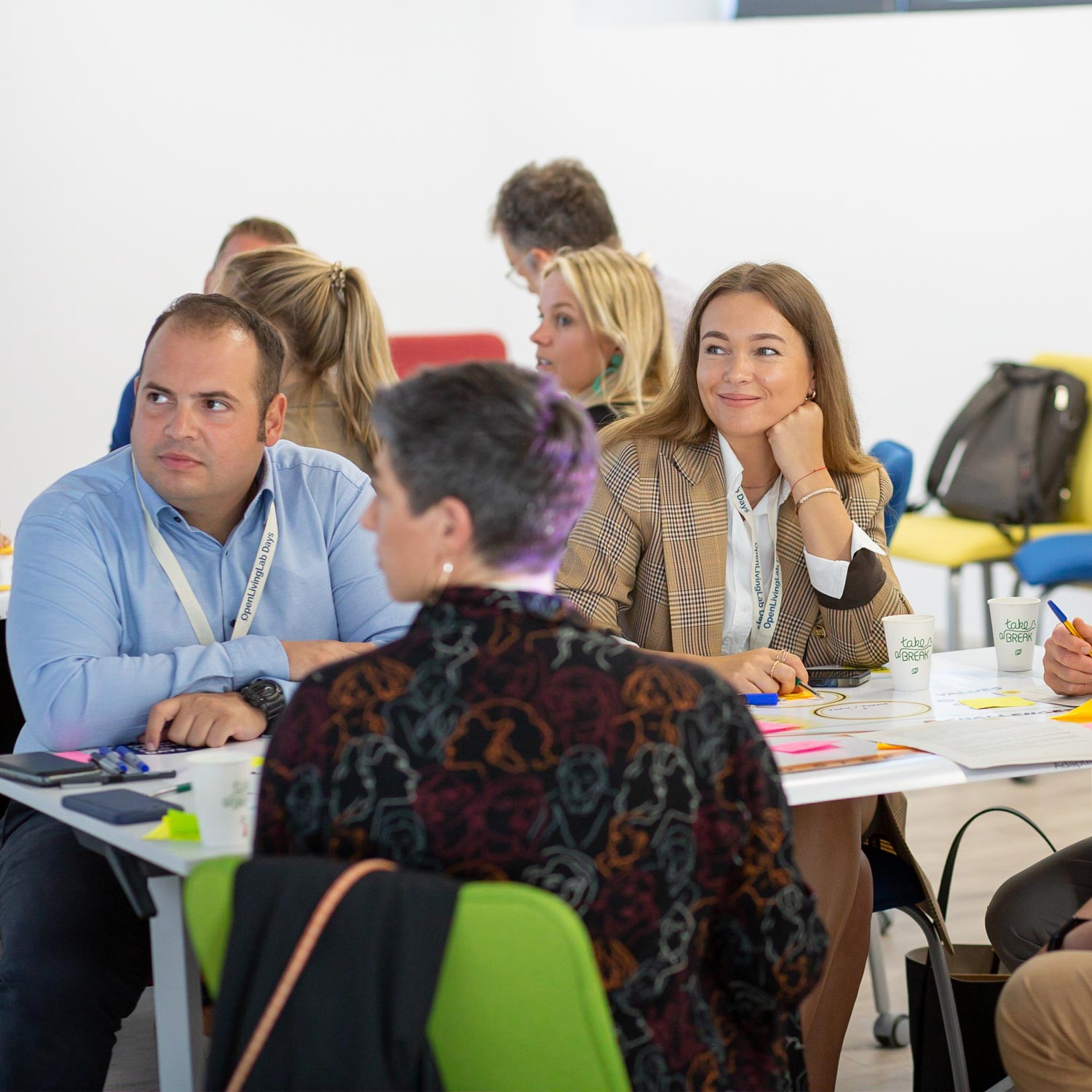Welcome to the world of Living Labs – dynamic spaces where ideas come to life through collaborative exploration and user-driven innovation.

Living Labs are open innovation ecosystems in real-life environments based on a systematic user co-creation approach that integrates research and innovation activities in communities and/or multi-stakeholder environments, placing citizens and/or end-users at the centre of the innovation process.
The concept ‘Living Lab’ is used for the organisation that innovates according to these principles, but also refers to the innovation projects that follow these guidelines and also links with specific activities, methods and tools within these innovation projects. Therefore, a distinction can be made between a Living Lab organization, a Living Lab project and Living Lab activities, methods and tools (micro, meso, macro).
Living Labs as real-life test and experimentation environments, foster co-creation and open innovation among the main actors of the Quadruple Helix Model, namely:
•Citizens,
•Government,
•Industry,
•Academia.

Living Labs are dynamic, open innovation ecosystems where research and innovation unfold in real-life environment rather than in isolated laboratories. By applying a systematic co-creation approach, they place citizens and end-users at the centre, ensuring that new solutions are not only innovative but also firmly grounded in real-world needs. This approach makes Living Labs particularly effective in addressing “wicked problems” – complex societal challenges such as climate change, urbanisation, and social inequality. These issues have no single solution and often involve conflicting interests among many actors. Living Labs respond by offering a collaborative and adaptive methodology, capable of integrating diverse perspectives and evolving with changing conditions.
According to ENoLL, Living Labs are defined as “user-centred, open innovation ecosystems based on a systematic user co-creation approach, integrating research and innovation processes in real-life communities and settings.”
This definition underlines the importance of engaging end-users as co-creators rather than passive recipients, ensuring that products, services, and policies developed within Living Labs are practical, relevant, and community driven.
Living Labs work as collaborative ecosystems built around the quadruple helix model of innovation:
By connecting these four groups, Living Labs create a neutral and trust-based environment where experimentation and learning can take place collectively.
Living Labs can work in multiple sectors. Most of the ENoLL members have a transversal approach that allows them to focus on more than two sectors. This graph shows the different sectors in which ENoLL members work and offer their services.
Dive into the origins, evolution, and future of Living Labs. This booklet highlights their impact, adaptability, and role in driving user-driven open innovation across diverse challenges and contexts.
Designed as a living document, it explores key milestones, policy developments, and emerging opportunities shaping the movement. Take a look inside.

Step into a world of bold ideas and transformative collaboration! Discover how our Members are co-creating groundbreaking solutions that shape the future. These success stories showcase the power of experimentation, community-driven innovation, and real-world impact.
If your organisation is all about user-driven open innovation, consider becoming part of our dynamic community, where Living Labs are benchmarked and ideas flourish. Plus, unlock even more possibilities by joining our association of fee-paying members.
Join the communityStay connected and inspired! Subscribe to our newsletter for the latest updates, insights, and innovations from our global community of Living Labs.

The European Network of Living Labs is the international, non-profit, independent association of certified Living Labs.
Av. des Arts 6, 1210 Saint-Josse-ten-Noode, Belgium
info@enoll.org
